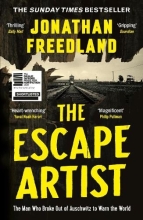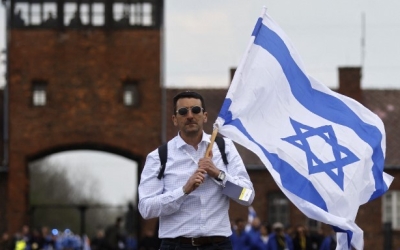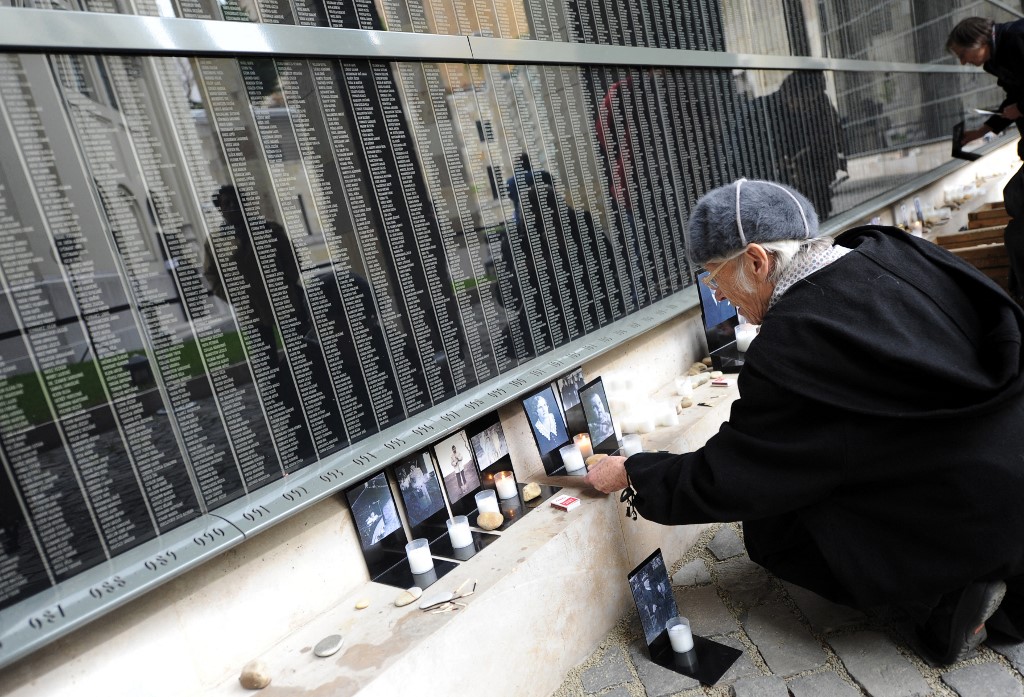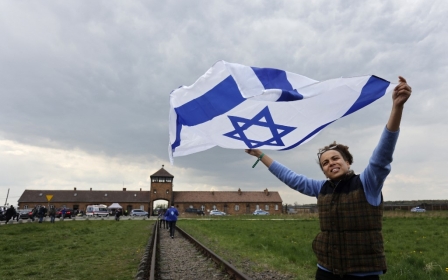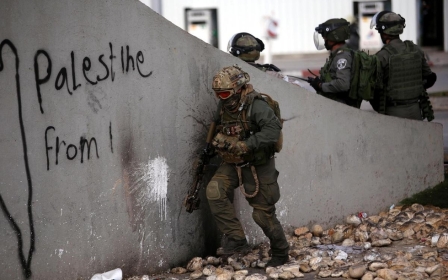'The Escape Artist': A gripping tale that avoids the difficult questions
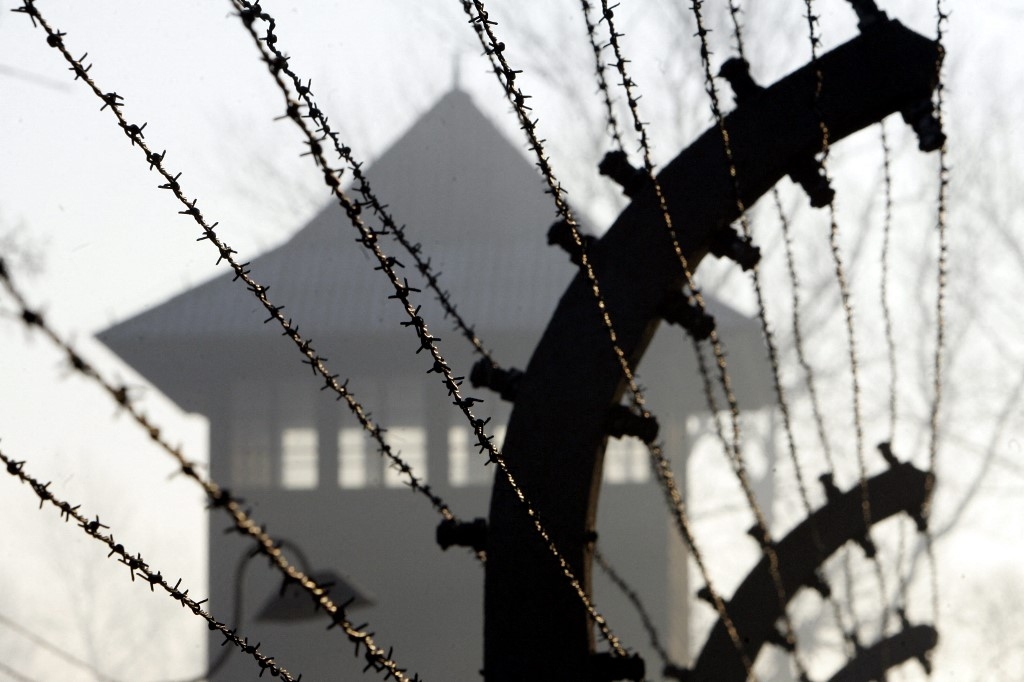
Jonathan Freedland’s The Escape Artist: The Man Who Broke Out of Auschwitz to Warn the World is the astonishing story of an astonishing man.
Just 14 when the Second World War broke out, Walter Rosenberg was transported to Auschwitz on 29 June 1942, one of 60,000 Slovakian Jews sent to the death camps of southern Poland between March and October of that year. He was among just a few hundred who would survive.
Rosenberg had already made two failed attempts to escape the Nazi dragnet, one of them through Hungary. He owed his survival in Auschwitz to his youth and strength, an innate instinct for survival and huge quantities of dumb luck.
Crucially, he was also adopted by the underground resistance network that operated among the upper echelons of prisoners in the camp. Talent-spotted after he endured a ferocious beating without betraying a fellow inmate, Rosenberg was hidden while suffering from typhus - normally a death sentence in Auschwitz - and provided with food and medicines.
Thereafter he was allocated comparatively comfortable jobs. Between August 1942 and June 1943, he worked on the Judenrampe, the railway platform where Jews from across Europe arrived.
New MEE newsletter: Jerusalem Dispatch
Sign up to get the latest insights and analysis on Israel-Palestine, alongside Turkey Unpacked and other MEE newsletters
It was his job to haul luggage and the bodies of the dead and dying from the cattle trucks while the new arrivals queued up for the selection, where the jerk of an SS doctor’s thumb assigned the overwhelming majority immediately to the gas chambers.
Often, five transports would arrive on a single day - each carrying thousands of Jews - and each time the ramp had to be cleared entirely of evidence of previous arrivals before the next train could pull in.
The job provided Rosenberg with a unique vantage point on the Nazi machinery of death and yielded a vital insight.
Hunting deer, not lambs
During his 10 months on the ramp, he never encountered a single new arrival who was aware of the fate that awaited them.
“The whole Auschwitz experience taught us that the slaughterhouse functions on the basis of the ignorance of the victim,” Rosenberg later told French filmmaker Claude Lanzmann, director of Shoah, the classic nine-hour documentary on the Holocaust. “To break this ignorance meant to break the slaughterhouse’s machinery.”
He developed a burning conviction - that if he could only escape and tell the world what he had seen then the Jews of Europe would not go so willingly into the ghettos, that they would not so willingly board the trains.
For the vast majority, resistance would be hopeless. But some at least might escape and survive. Crucially, the smooth functioning of the machinery would be disrupted and the conveyor belt of death slowed.
In Rosenberg’s own expression, the Nazis would be hunting deer, not lambs.
Rosenberg deployed his formidable memory to mentally record details of the transports. Decades later, having spotted the telltale number of an Auschwitz survivor tattooed on the arm of a waiter in New York, he astonished him by telling him precisely when he must have arrived and where he had come from.
On 7 April 1944, he and another young Slovak Jew called Alfred Wetzler managed to hide in the outer periphery of the camp. Three days later they escaped, trekking 50 miles to Slovakia which, though ruled by a puppet fascist government, was still nominally independent of Germany.
By 25 April they were providing chapter and verse on the workings of the death camp to Slovakian Jewish leaders who quickly compiled a detailed report.
Bald facts
It’s a gripping story. Freedland, a prominent columnist with Britain’s Guardian newspaper, is an accomplished writer who knows how to tell a story.
But there are a couple of oddities to this book.
Firstly - Rosenberg had already written his autobiography, I Escaped from Auschwitz, 60 years ago, with journalist Alan Bestic. Freedland is able to provide additional details. He spoke with both of Rosenberg’s wives (damaged and traumatised, Rosenberg was, perhaps not surprisingly, a poor husband - at least in his first marriage).
He is also a scholar of the Holocaust and can provide context. But for long passages, Freedland is simply transferring Rosenberg’s own account into the third person.
Inevitably, some of the vividness and immediacy is lost. And the blunt vigour of the Rosenberg/Bestic book is not always enhanced by being converted into Freedland’s more polished prose.
More importantly, Freedland struggles with aspects of Rosenberg’s story after his escape.
The bald facts are these.
Rosenberg and Wetzler were concerned above all to prevent the slaughter of Hungary’s 825,000 Jews, whose transportation to Auschwitz they knew was about to begin at the time they escaped in April 1944.
By the end of that month, a copy of their report was in the hands of Rezso Kasztner, who Freedland describes as “the de facto leader of Hungarian Jewry”. But Kasztner did nothing.
Instead, he negotiated a pact with Adolf Eichmann, the Nazi overseeing the deportation of Hungary’s Jews. Eichmann allowed Kasztner to dispatch a train to Switzerland carrying 1,700 Jews, hand-picked by Kasztner himself. In return, the Nazis received close to $1.7m - and Kasztner’s silence.
Kasztner even facilitated the distribution of postcards, written under duress by new arrivals at Auschwitz hours before their murder, saying they had been “resettled” in new homes.
Consumed with fury
Duped, and ignorant of the Rosenberg-Wetzler report, 437,402 Hungarian Jews were dispatched to Auschwitz over the course of 56 days, the vast majority perishing in the gas chambers. It was only when the report began to leak out through other sources at the start of June 1944, that international pressure was brought to bear on the Hungarian government, and Hungary’s remaining Jews won a temporary reprieve.
After the war, Kasztner provided character references for a number of leading Nazis at Nuremberg.
Freedland elbows Vrba aside, steps in front of him and informs the reader that Vrba is wrong and that Kasztner’s Zionism was coincidental
Not surprisingly, Rosenberg, who after 1944 adopted the name Rudolf Vrba, which he was given while living undercover in Slovakia, spent the rest of his life consumed with fury at the behaviour of Kasztner and other Hungarian Jewish leaders.
Freedland makes no attempt to defend Kasztner. The problem he has is that Vrba, as he now was, attributed Kasztner’s behaviour to the fact he was a Zionist, prepared - in Vrba’s view - to sacrifice the many to preserve a small band of dedicated would-be emigrants to Palestine.
In his own book Vrba quoted a 1937 speech by Chaim Weizmann, president of the World Zionist Organisation. “The old ones will pass … They are dust, economic and moral dust in a cruel world … Only a branch will survive,” he said.
Kasztner, Vrba speculated, believed in a "Jewish nation created of Top People for Top People by Top People", in which Jews like himself were expendable.
At this point, Freedland, a Zionist himself, suddenly elbows Vrba aside, steps in front of him and informs the reader that Vrba is wrong and that Kasztner’s Zionism was coincidental.
“The Zionist movement, like every other, produced both saints and sinners while under the Nazi jackboot. The human responses to the horror of the Third Reich were varied and seldom ran on ideological lines,” he writes.
'Collaboration'
Adolf Eichmann disagreed. “There was a strong similarity between attitudes in the SS and the viewpoint of these immensely idealistic Zionist leaders,” he told an interviewer in the 1950s, before his capture.
“I believe that Kasztner would have sacrificed a thousand or a hundred thousand… to achieve his goal," he went on. Eichmann felt Kasztner “would have made an ideal Gestapo officer himself” - comments that do not appear in Freedland’s book.
Obviously, Eichmann is an unreliable witness.
But Kasztner - who rose to become a leading government official in Israel - was the focus of two lengthy trials in the 1950s, trials which tore Israel apart.
Effectively, the Zionist establishment itself was in the dock for its behaviour during the war.
Reading Kasztner’s own testimony, you can see why Vrba might have reached the conclusions he did. "The Hungarian Jew was a branch that long ago dried up on the tree,” Kasztner said. Hungary’s Jews "lacked any ideological Jewish backbone," said one of his aides.
In the first trial, the judge ruled that Kasztner was guilty of “collaboration in the fullest sense of the word” and had “sold his soul to the devil”.
The Israeli government appealed against the verdict, desperate, in Freedland’s words, to “smooth over” the deep divisions the trial had opened up. Kasztner was cleared in a majority verdict in the Supreme Court - the judge pointing out that, if Kasztner was guilty, then surely so were many other Zionist “leaders and half-leaders who gagged themselves in an hour of crisis”.
By then Kasztner himself was dead - assassinated by three young right-wingers enraged at his wartime actions.
Fraught terrain
This is immensely fraught terrain and, obviously, enormously complex issues are involved. Freedland is entitled to his opinion, one which is shared by many scholars. But so is Vrba. He, after all, had lived through the white heat of this moment and emerged from the very belly of the beast.
What’s uncomfortable is that, having appropriated his story, Freedland comes close to dismissing the older Vrba as obsessive, bitter and delusional - a disservice to this fiercely intelligent, intensely rational man.
What’s uncomfortable is that, having appropriated his story, Freedland comes close to dismissing the older Vrba as obsessive, bitter and delusional
There are echoes here of Vrba’s extraordinary interview with Claude Lanzmann for Shoah, which is available in full on YouTube. Almost four hours long, the interview is a curious, tetchy encounter.
Shoah is rightly regarded as a masterpiece and the definitive account of the Holocaust. But, like Freedland, Lanzmann was a Zionist and clearly uncomfortable with Vrba’s hostility to the wartime Zionist leadership.
He repeatedly challenges him. But Vrba stands his ground. Politely, but firmly, he insists that Kasztner and other Zionist leaders were “brooms which Nazis used for sweeping the Jews in the ovens”. The quote was not used in the film.
Vrba moved to Israel shortly after Kasztner’s assassination, but stayed there only 18 months, uncomfortable living in a country where those he felt had betrayed the Jewish people now held power.
Poignant picture
As historical interest in the Holocaust grew, Vrba found himself sidelined. He couldn’t be trusted to address audiences “without serving up the familiar brew of ‘accusations and rage’”, Freedland writes. His was a version of events no one wanted to hear.
After what he’d been through, his rage is understandable.
In Vancouver, which Vrba made his home towards the end of his life, the Jewish community held an annual symposium on the Holocaust for high school students. Vrba was not invited - but would attend anyway. Freedland paints an almost unbearably poignant picture of him standing outside, “peeking in, watching the proceedings from a distance”.
Freedland never loses empathy for his subject - but it’s hard not to feel he effectively sides with those who shut the door in Vrba’s face.
The Escape Artist: The Man Who Broke Out of Auschwitz to Warn the World is highly readable and Freedland’s desire to rescue Vrba from obscurity is laudable. But a different author might have written a very different, more uncomfortable, and perhaps more revealing book.
The views expressed in this article belong to the author and do not necessarily reflect the editorial policy of Middle East Eye.
Middle East Eye delivers independent and unrivalled coverage and analysis of the Middle East, North Africa and beyond. To learn more about republishing this content and the associated fees, please fill out this form. More about MEE can be found here.



